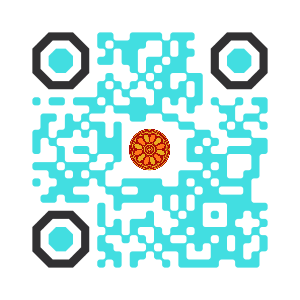
:: International Transaction Journal of Engineering, Management, & Applied Sciences & Technologies
http://TuEngr.com

ISSN 2228-9860
eISSN 1906-9642
CODEN: ITJEA8
FEATURE PEER-REVIEWED ARTICLE
Vol.11(9) (2020) |
-
FACTORS AFFECTING REQUIREMENTS ENGINEERING IN AGILE SOFTWARE DEVELOPMENT: A SYSTEMATIC ANALYSIS
 Muhammad Ali Abid, Zia Ud Din, Muhammad Ijaz Khan, Tariq Naeem (Institute of Computing and Information Technology, Gomal University, Dera Ismail Khan, PAKISTAN).
Muhammad Ali Abid, Zia Ud Din, Muhammad Ijaz Khan, Tariq Naeem (Institute of Computing and Information Technology, Gomal University, Dera Ismail Khan, PAKISTAN).
Disciplinary: Information Technology, Software Engineering.
DOI: 10.14456/ITJEMAST.2020.163
Keywords: Requirements Engineering (RE); Agile Requirement Engineering Models (AREM); Traditional Models; Agile RE practices; IEEE database; ACM database; Springer database; Elsevier database; Science direct database.
AbstractRequirements Engineering (RE) has been considered as agile software development initial routes that include system stakeholders in problem analysis iterative process, elicitation requirements, specification, and validation. A successful project is often dominated by the RE process. Numerous techniques about requirement engineering practices are existent to ensure that requests are complete from each dimension. This paper presents an exposition of requirements engineering challenges as well as complexities, beset on large software research division. In this drive, developing requirements is a challenging undertaking that helps in identifying the related issues. In RE, the involved events are defined and facets of an iterative procedure are offered. Removing complexities from AREM is a very tedious and laborious task. We pointed out those complexities who dominate the REM, badly affect the Agile Requirement Engineering Model towards success. If we omit the pointed complexities or have care during the RE model development, then we achieve as we desire accordingly.
Paper ID: 11A9A
Paper ID: 11A9A
Cite this article:
Abid, M. A., Din, Z. U., Khan, M. I., & Naeem, T. (2020). FACTORS AFFECTING REQUIREMENTS ENGINEERING IN AGILE SOFTWARE DEVELOPMENT: A SYSTEMATIC ANALYSIS. International Transaction Journal of Engineering, Management, & Applied Sciences & Technologies, 11(9), 11A9A: 1-10. http://doi.org/10.14456/ITJEMAST.2020.163
References
- Abrahamsson, P. (2002). Agile Software Development Methods: Review and Analysis. VTT.
- Bjarnason, E., Wnuk, K., & Regnell, B. (2011). A case study on benefits and side-effects of Agile practices in large-scale requirements engineering. In Proceedings of the 1st Workshop on Agile Requirements Engineering. 3.
- Boehm, B. (2000). The requirements that handle IKIWISI, COTS and rapid change. Computer, 33(7), 99-102.
- Bose, S., Kurhekar, M., & Ghoshal, J. (2008). Agile Methodology in the Requirements Engineering. SET Labs Briefings Online.
- Cao, L., & Ramesh, B. (2008). Agile requirements engineering practices: An empirical study. Software, IEEE, 25(1), 60-67.
- Davey, B., & Bendigo, C. (2008). Requirement Elicitation-what's Missing? Issues in information sciences and information technology, 5, 543-551.
- Fowler, M. (2001). The new methodology. Wuhan University Journal of Natural Sciences, 6(1-2), 12-24.
- Grau, R., Lauenroth, K., Bereza, B., Veenendaal, E., & Zee, S. (2013). The Requirements Engineering and Agile Development-collaborative, just enough, just in time, sustainable.
- Inayat, I., Salim, S. S., Marczak, S., Daneva, M., & Shamshirband, S. (2014). A systematic literature review on Agile requirements engineering practices & challenges. Computers in Human Behavior.
- Kumar, M., Shukla, M., & Agarwal, S. (2013). A Hybrid Approach of Requirement Engineering in Agile Software Development., International Conference on Machine Intelligence and Research Advancement (ICMIRA). IEEE. 515-519.
- Lizbeth, Z., Alfonso, A., Carolina, T., & Sanjay, M. A. (2017). Requirements Engineering Techniques Review in Agile Software Development Methods.
- Lucia, A. D., & Qusef, A. (2010). The requirements engineering in Agile software development. Journal of Emerging Technologies in Web Intelligence, 2(3), 212-220.
- Paetsch, F., Eberlein, A., & Maurer, F. (2003). Requirements engineering and Agile software development. In 2012 IEEE 21st International Workshop on Enabling Technologies: Infrastructure for Collaborative Enterprises. IEEE Computer Society. 308.
- Pandey, D., Suman, U., & Ramani, A. K. (2010). An effective requirement engineering process model for software development and requirements management. International Conference on Advances in Recent Technologies in Communication and Computing (ARTCom), 287-291.
- Papadopoulos, G. (2015). Moving from Traditional to Agile Software Development Methodologies Also on Large, Distributed Projects. Procedia-Social and Behavioral Sciences, 175, 455-463.
- Pressman, R. S. (2005). The Software engineering: a practitioner's approach. Palgrave Macmillan.
- Racheva, Z., Daneva, M., & Herrmann, A. (2010). A conceptual model of client-driven Agile requirements prioritization: Results of a case study.
- Rizvi, B., (2013). A systematic review of the distributed Agile software engineering. In Proceedings of the 2010 ACM-IEEE International Symposium on Empirical Software Engineering and Measurement. 39.
- Sajjad, U., & Hanif, M. (2010). “Issues and challenges of requirement elicitation in large web projects”, School of computing, Blekinge institute of technology ronne by Sweden.
- Sehrish, A., Shahid, N., Shumaila, A. (2016). Analysis of Requirement Engineering Techniques in Agile Development Method. International Journal of Computer Science and Information Security. 14(11), 889-894.
- Sillitti, A., & Succi, G. (2005). Requirements engineering for Agile methods. In Engineering and Managing Software Requirements. Springer. 309-326.
- Sommerville, I., & Kotonya, G. (1998). Requirements engineering: processes and techniques. John Wiley.
- Soundararajan, S., & Arthur, J. D. (2009). A soft-structured Agile framework for larger scale systems development. ECBS 2009. 16th Annual IEEE International Conference and Workshop on the Engineering of Computer Based Systems. 187-195.
- Svensson, R. B., Birgisson, S. ?., Hedin, C., & Regnell, B. (2008). The Agile Requirements Abstraction Model–Requirements Engineering in a Scrum Environment. Department of Computer Science, Lund University.
- Tomayko, J. E. (2002). The Engineering of unsTable requirements using Agile methods. International Workshop on the Time-Constrained Requirements Engineering (TCRE’02). Essen.
- Zainab, S., Rabiya, A., Shahid, N., & Asim, A. (2017). Analytical Review on Test Cases Prioritization Techniques: An Empirical Study. IJACSA, 8(2), 2017.
- Zhu, Y. (2009). The Requirements Engineering in an Agile Environment.
Other issues:
Vol.11(11)(2020)
Vol.11(10)(2020)
Vol.11(8)(2020)
Vol.11(7)(2020)
Vol.11(6)(2020)
Vol.11(5)(2020)
Vol.11(4)(2020)
Vol.11(3)(2020)
Vol.11(2)(2020)
Vol.11(1)(2020)
Archives
Call-for-Papers
Call-for-Scientific PapersCall-for-Research Papers: ITJEMAST invites you to submit high quality papers for full peer-review and possible publication in areas pertaining engineering, science, management and technology, especially interdisciplinary/cross-disciplinary/multidisciplinary subjects.
To publish your work in the next available issue, your manuscripts together with copyright transfer document signed by all authors can be submitted via email to Editor @ TuEngr.com (no space between). (please see all detail from Instructions for Authors)
Publication and peer-reviewed process:
After the peer-review process (4-10 weeks), articles will be on-line published in the available next issue. However, the International Transaction Journal of Engineering, Management, & Applied Sciences & Technologies cannot guarantee the exact publication time as the process may take longer time, subject to peer-review approval and adjustment of the submitted articles.